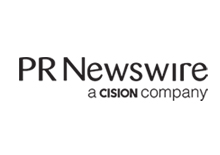Benign Prostatic Hyperplasia (BPH) Markets to 2027 - There Have Been 3 Licensing & Asset Acquisition Deals Involving BPH Drugs During 2013-2018
DUBLIN, June 21, 2019 /PRNewswire/ -- The "Market Spotlight: Benign Prostatic Hyperplasia (BPH)" report has been added to ResearchAndMarkets.com's offering.
https://mma.prnewswire.com/media/539438/Research_and_Markets_Logo.jpg
This Market Spotlight report covers the Benign Prostatic Hyperplasia market, comprising key marketed and pipeline drugs, clinical trials, upcoming and regulatory events, probability of success, patent information, a 10-year disease prevalence forecast, and licensing and acquisition deals, as well as presenting drug-specific revenue forecasts.
Key Takeaways
-- The author estimates that in 2016, there were 595.2 million prevalent
cases of benign prostatic hyperplasia (BPH) among males aged 40 years
and older worldwide, and forecasts that number to increase to 728.7
million prevalent cases by 2025.
-- Asia is estimated to have had the largest number of prevalent cases in
2016, and Oceania is estimated to have had the smallest number (354.2
million and 3.9 million cases, respectively).
-- Approved drugs in the BPH space target phosphodiesterase 5, steroid
5a-reductase, alpha 1 adrenergic receptor, and muscarinic acetylcholine
receptor. All marketed drugs for BPH are administered via the oral
route.
-- The majority of industry-sponsored drugs in active clinical development
for BPH are in Phase II, with just two drugs in Phase III. Therapies in
development for BPH focus on a wide variety of targets. These therapies
are administered via the rectal, percutaneous catheter/injection,
intratumoral, intravenous, and oral routes.
-- The release of topline Phase IIb trial results for OPK-88004 is the only
high-impact upcoming event in the BPH space. The overall likelihood of
approval of a Phase I urology asset is 15.8%, and the average
probability a drug advances from Phase III is 80%. Drugs, on average,
take 8.1 years from Phase I to approval in the overall urology space.
-- There have been three licensing and asset acquisition deals involving
BPH drugs during 2013-18. The $8.2m agreement between Aceto and Par
Pharmaceutical in 2014, under which Aceto's subsidiary, Rising
Pharmaceuticals, purchased three ANDAs from Par Pharmaceutical through
the acquisition of doxercalciferol, paricalcitol, and dutasteride
capsules, was the only deal with a disclosed value.
-- The distribution of clinical trials across Phase I-IV indicates that
just over half of trials for BPH have been in the early and midphases of
development, with 52% of trials in Phase I-II, and around 48% in Phase
III-IV.
-- The US has a substantial lead in the number of BPH clinical trials
globally. Germany leads the major EU markets, while South Korea has the
top spot in Asia.
-- Clinical trial activity in the BPH space is dominated by completed
trials. GlaxoSmithKline has the highest number of completed clinical
trials for BPH, with 65 trials.
-- GlaxoSmithKline leads industry sponsors with the highest number of
overall clinical trials BPH, followed by Astellas and Sanofi
Key Topics Covered
OVERVIEW
KEY TAKEAWAYS
DISEASE BACKGROUND
TREATMENT
Watchful waiting
Pharmacological treatment
Surgical treatment
EPIDEMIOLOGY
MARKETED DRUGS
Approvals by country
PIPELINE DRUGS
KEY UPCOMING EVENTS
KEY REGULATORY EVENTS
Four Drugs Set For EU Approval, EMA Holds Fire On Pacritinib
Device Debut: Procept Biorobotics Expects To Make A Splash With AquaBeam
PROBABILITY OF SUCCESS
LICENSING AND ASSET ACQUISITION DEALS
Boston Scientific Scores March M&A Double Whammy With NxThera
Teleflex Adds Minimally Invasive BPH System With NeoTract Buy
PARENT PATENTS
REVENUE OPPORTUNITY
CLINICAL TRIAL LANDSCAPE
Sponsors by status
Sponsors by phase
Recent events
BIBLIOGRAPHY
Prescription information
APPENDIX
LIST OF FIGURES
Figure 1: Trends in prevalent cases of BPH, 2017-26
Figure 2: Overview of pipeline drugs for BPH in the US
Figure 3: Pipeline drugs for BPH, by company
Figure 4: Pipeline drugs for BPH, by drug type
Figure 5: Pipeline drugs for BPH, by classification
Figure 6: Key upcoming events in BPH
Figure 7: Probability of success in the BPH pipeline
Figure 8: Licensing and asset acquisition deals in BPH, 2013-18
Figure 9: Parent patents in BPH
Figure 10: Clinical trials in BPH
Figure 11: Top 10 drugs for clinical trials in BPH
Figure 12: Top 10 companies for clinical trials in BPH
Figure 13: Trial locations in BPH
Figure 14: BPH trials status
Figure 15: BPH trials sponsors, by phase
LIST OF TABLES
Table 1: Prevalent cases of BPH, 2017-26
Table 2: Prevalence proportions of BPH, by age, 2017-26
Table 3: Marketed drugs for BPH
Table 4: Approvals by country for BPH
Table 5: Pipeline drugs for BPH in the US
Table 6: Historical global sales, by drug ($m), 2013-17
Table 7: Forecasted global sales, by drug ($m), 2018-22
For more information about this report visit https://www.researchandmarkets.com/r/cttg06
Research and Markets also offers Custom Research services providing focused, comprehensive and tailored research.
Media Contact:
Research and Markets
Laura Wood, Senior Manager
press@researchandmarkets.com
For E.S.T Office Hours Call +1-917-300-0470
For U.S./CAN Toll Free Call +1-800-526-8630
For GMT Office Hours Call +353-1-416-8900
U.S. Fax: 646-607-1907
Fax (outside U.S.): +353-1-481-1716
View original content:http://www.prnewswire.com/news-releases/benign-prostatic-hyperplasia-bph-markets-to-2027---there-have-been-3-licensing--asset-acquisition-deals-involving-bph-drugs-during-2013-2018-300872260.html
SOURCE Research and Markets




